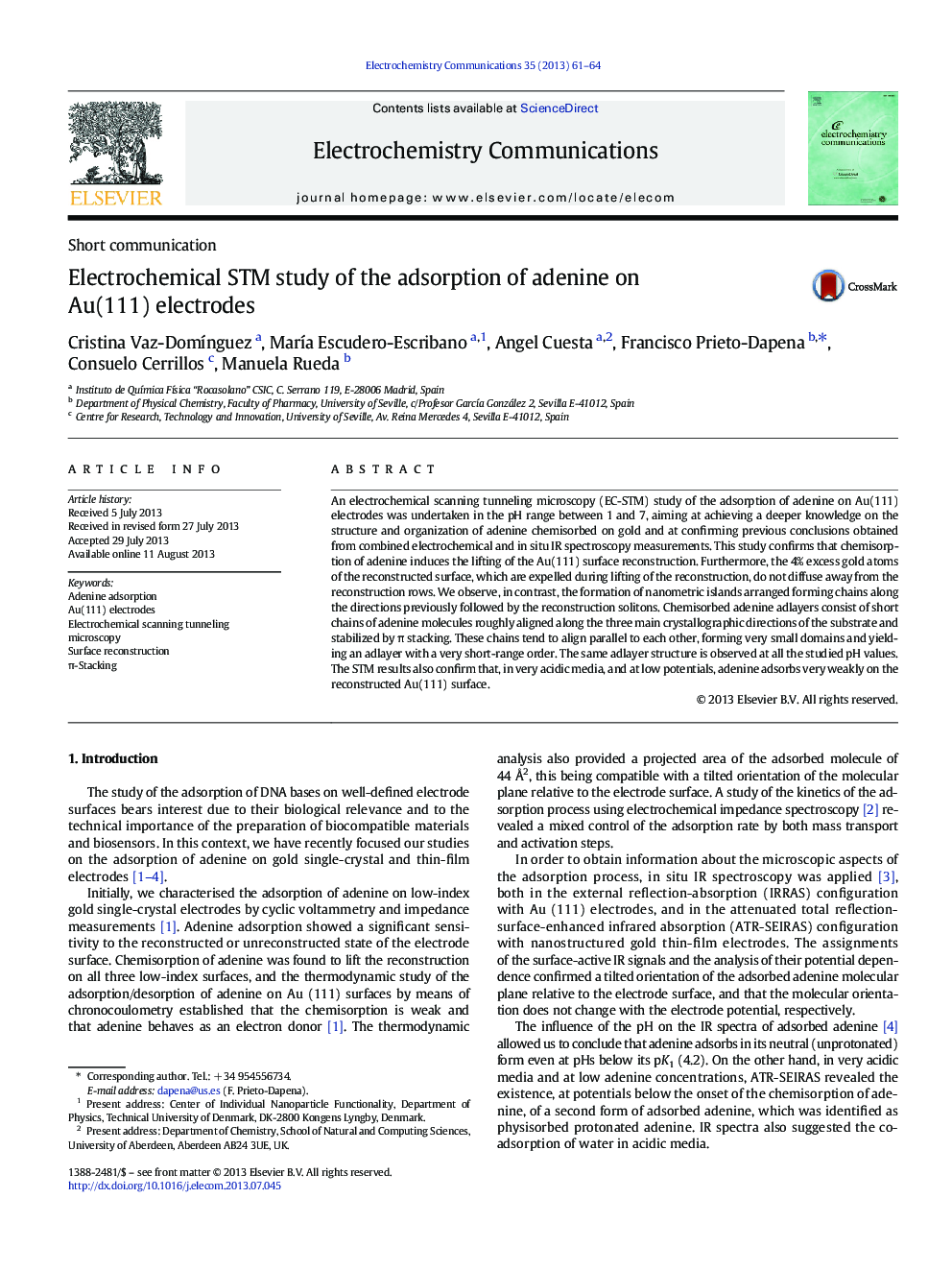| Article ID | Journal | Published Year | Pages | File Type |
|---|---|---|---|---|
| 179394 | Electrochemistry Communications | 2013 | 4 Pages |
•Chemisorbed adenine reduces the mobility of gold adatoms.•The adlayer of chemisorbed adenine adopts the same structure in the pH range 1 to 7.•The structure consists of short chains along the main crystallographic directions.•Intermolecular distances suggest π-stacking interactions within the chains.•Interchain distances suggest van der Waals interactions between chains.
An electrochemical scanning tunneling microscopy (EC-STM) study of the adsorption of adenine on Au(111) electrodes was undertaken in the pH range between 1 and 7, aiming at achieving a deeper knowledge on the structure and organization of adenine chemisorbed on gold and at confirming previous conclusions obtained from combined electrochemical and in situ IR spectroscopy measurements. This study confirms that chemisorption of adenine induces the lifting of the Au(111) surface reconstruction. Furthermore, the 4% excess gold atoms of the reconstructed surface, which are expelled during lifting of the reconstruction, do not diffuse away from the reconstruction rows. We observe, in contrast, the formation of nanometric islands arranged forming chains along the directions previously followed by the reconstruction solitons. Chemisorbed adenine adlayers consist of short chains of adenine molecules roughly aligned along the three main crystallographic directions of the substrate and stabilized by π stacking. These chains tend to align parallel to each other, forming very small domains and yielding an adlayer with a very short-range order. The same adlayer structure is observed at all the studied pH values. The STM results also confirm that, in very acidic media, and at low potentials, adenine adsorbs very weakly on the reconstructed Au(111) surface.
